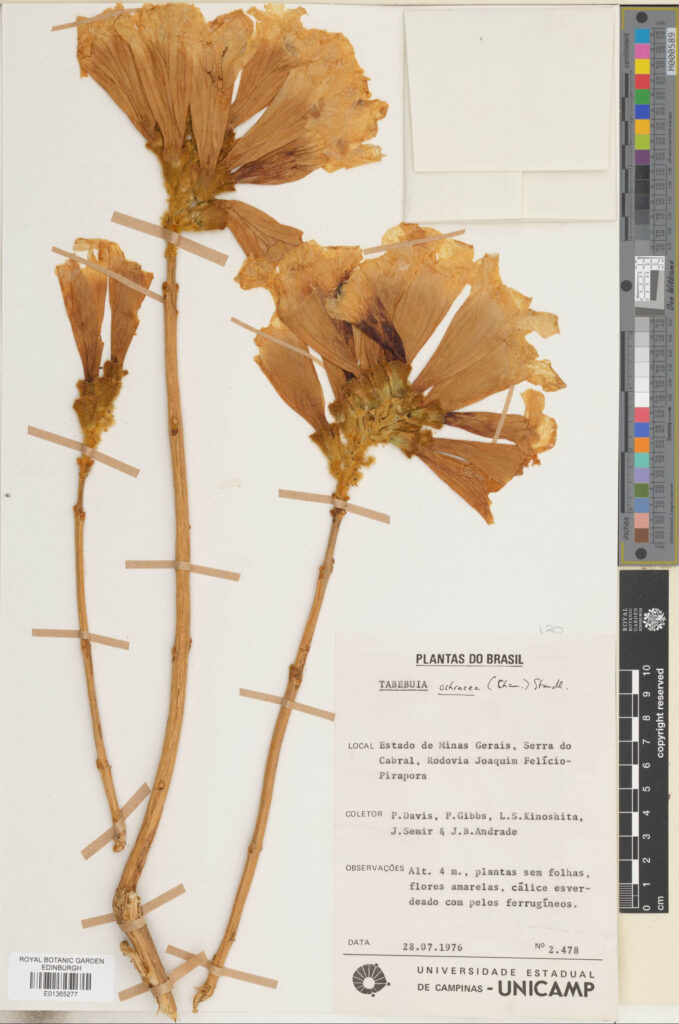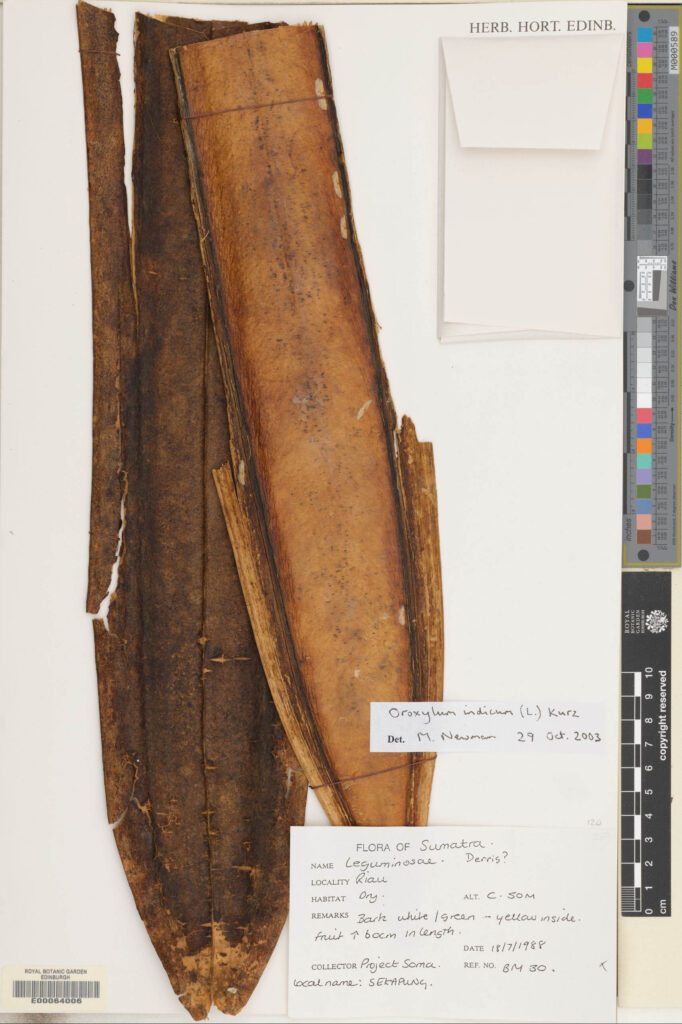The following blog was written by Rebecca Camfield a digitiser in the Herbarium.
Since 2021 we have increased our digitisation capacity reaching 1 million specimens imaged in August 2024. Each digitiser is assigned a family of plants to work through. This series of blogs will spotlight the families that have been completed by a member of the team.
Bignoniaceae is a pantropical family of approximately 80 genera and 800 species. They are woody plants with trumpet flowers. Although the trumpet flower is similar throughout the family its fruit vary from fleshy berries to very large bivalved capsules filled with winged seeds. These vary in shape and texture – some even appear fluffy.
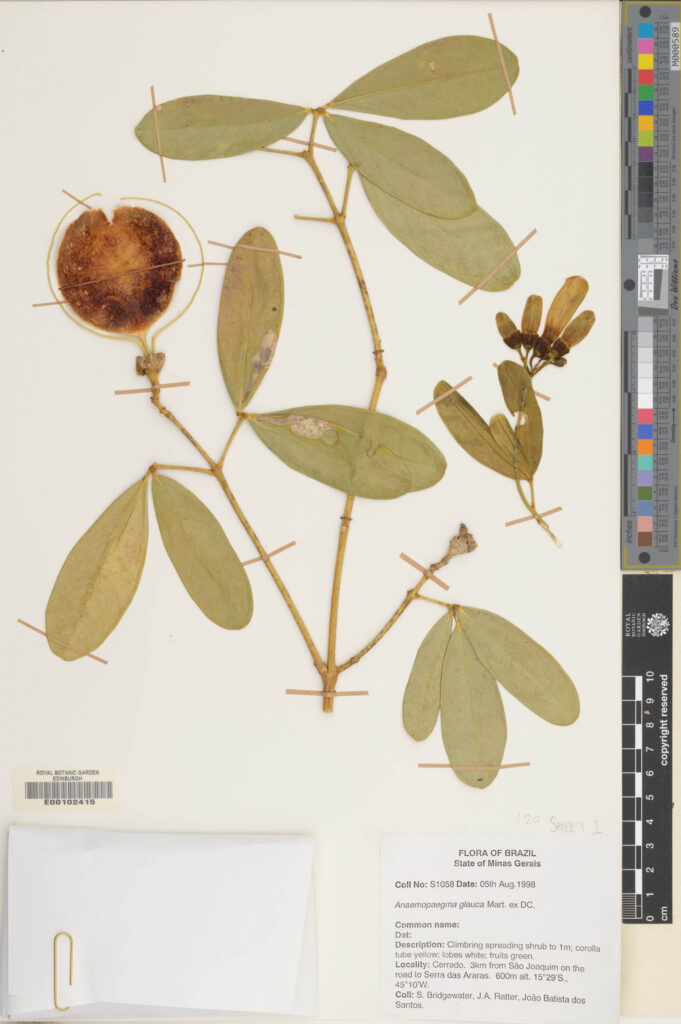
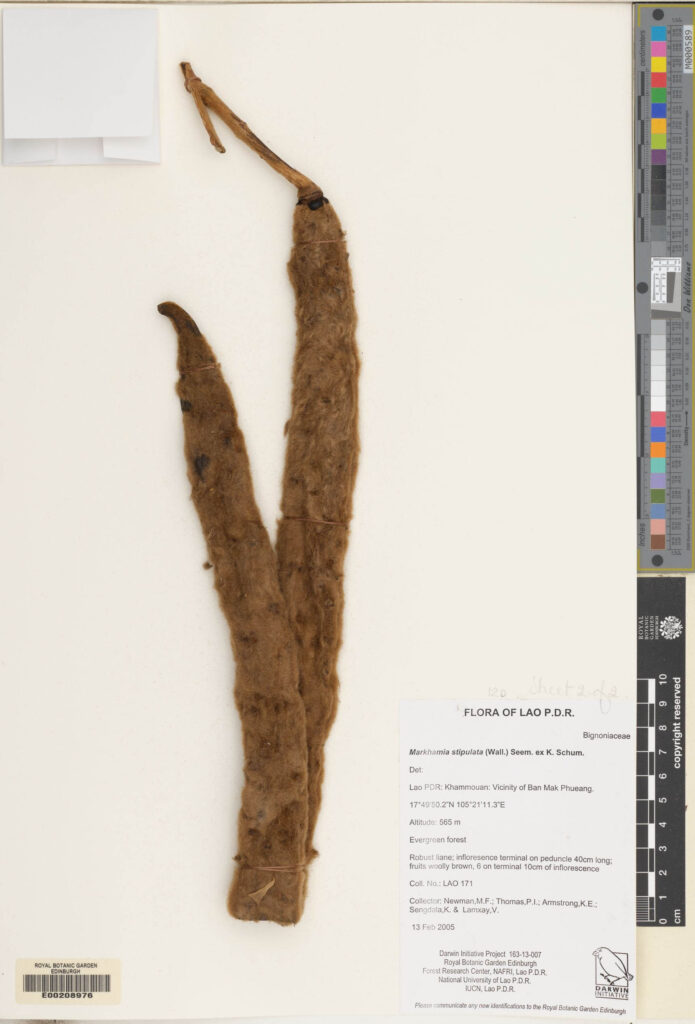
They are heavily used as ornamental plants due to their large flowers, a good example is Jacaranda mimosifolia D.Don, native to South America but with its purple flowers that appear before the leaves it is used to line many avenues in cities across the tropics and subtropics. There are several genera that are large flowering trees prized in landscaping:
- Spathodea – the African Tulip tree
- Campsis – the trumpet vine
- Tabebuia – Antwood, which forms hollows that ants move into to help defend the tree from pests
- Catalpa
- Pyrostegia
- Handroanthus
- Roseodendron
- Crescentia – Calabash tree
Yet there are also much smaller herbaceous plants like Incarvillea (hardy Gloxinia/Chinese trumpet flower) from the alpine regions.
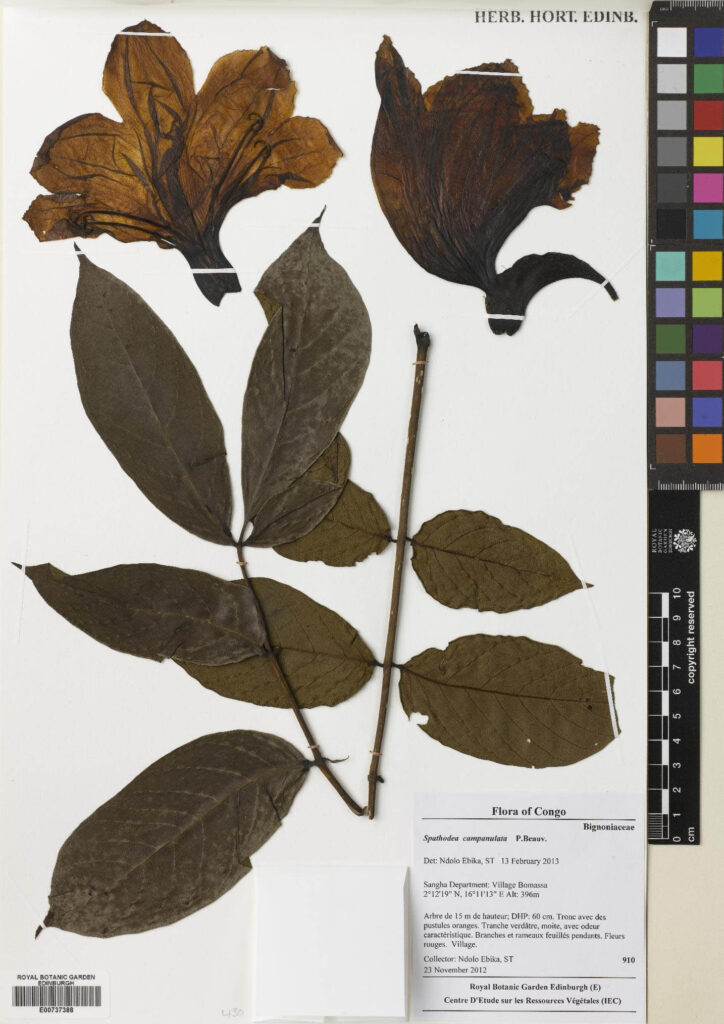
Handroanthus, locally known as Ipeis one of hardest, heaviest and most durable woods in the Americas and there are several species all harvested for lumber. Paratecoma was once an important timber tree but has been over exploited to the verge of extinction.
Several are used, including fresh fruit and powdered seeds that are used in cooking. In Colombia a species of Dolichandra is poisonous and shavings of the bark are mixed with bait to paralyse crabs. They are then easy to pick up in the morning and by time they reach market the poison is gone from their system. In the Amazon the following are used for dyes: Friderica, Cybistax and Sparattosperma.
Our collections
Prior to mass digitisation there were 1,163 specimens online, after we had 2,711 specimens. Due to interest in the family several areas and genera had already been digitised. Our collection can be viewed here.
Top 5 Filing regions
| No. of Specimens | Herbarium Filing Region |
| 616 | East Tropical South America |
| 378 | West Tropical South America |
| 354 | Inner China, Korea and Taiwan |
| 249 | India, pakistand & Bangladesh |
| 167 | Cultivated |
Our collections are quite varied showcasing the family’s pan global spread and heavy horticultural use.
Top 5 Genera
| No. of Specimens | Genus |
| 382 | Incarvillea |
| 217 | Tabebuia |
| 161 | Tecoma |
| 157 | Arrabidaea |
| 153 | Stereospermum |
Our collection of Incarvillea is quite large but that’s mostly due to our historical collections and recent research which focuses heavily on its home range of the Himalayas. The genus only has 16 or so species compared with the biggest genus Tabebuia with 100 species, which only comes in third.
